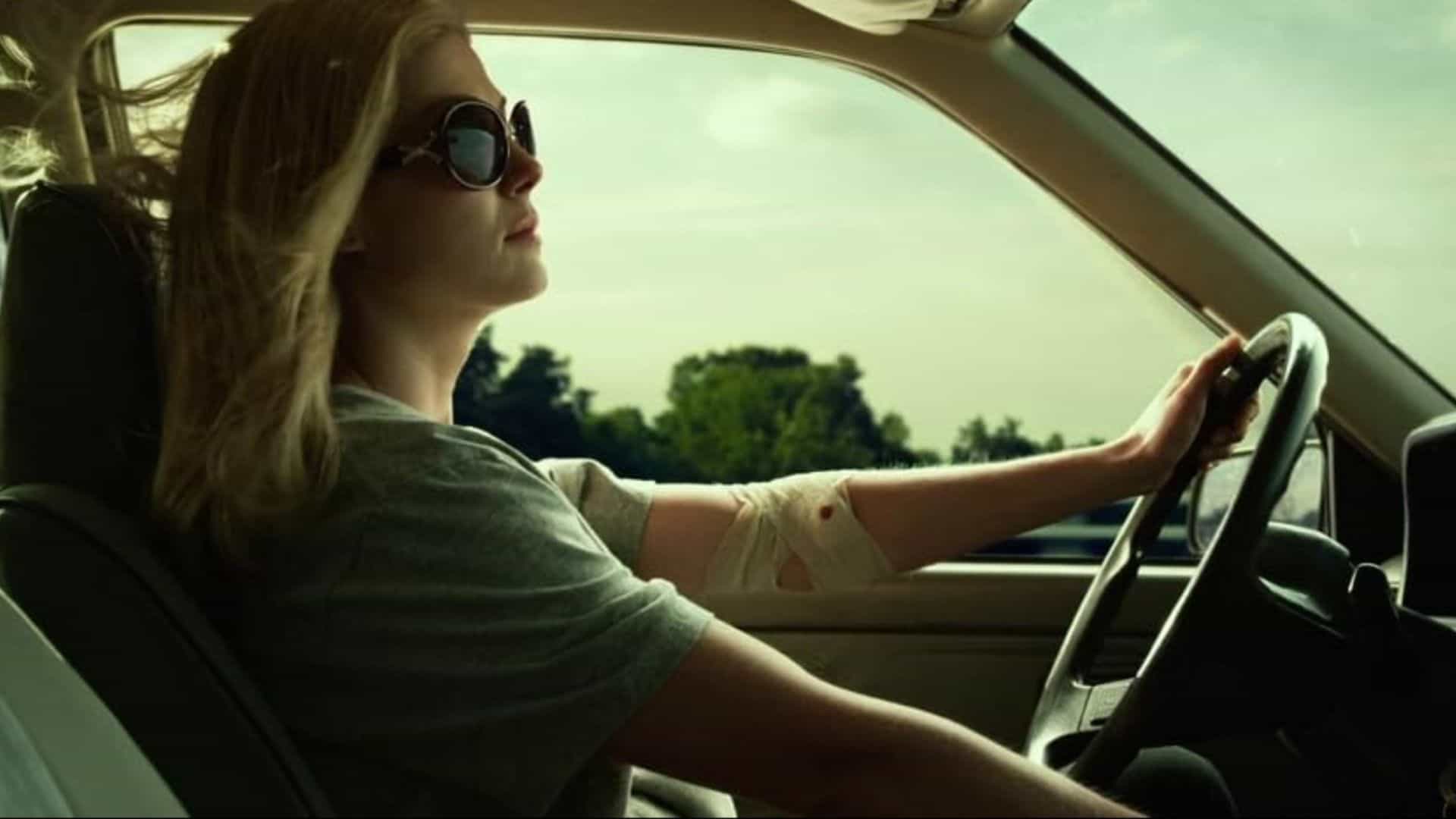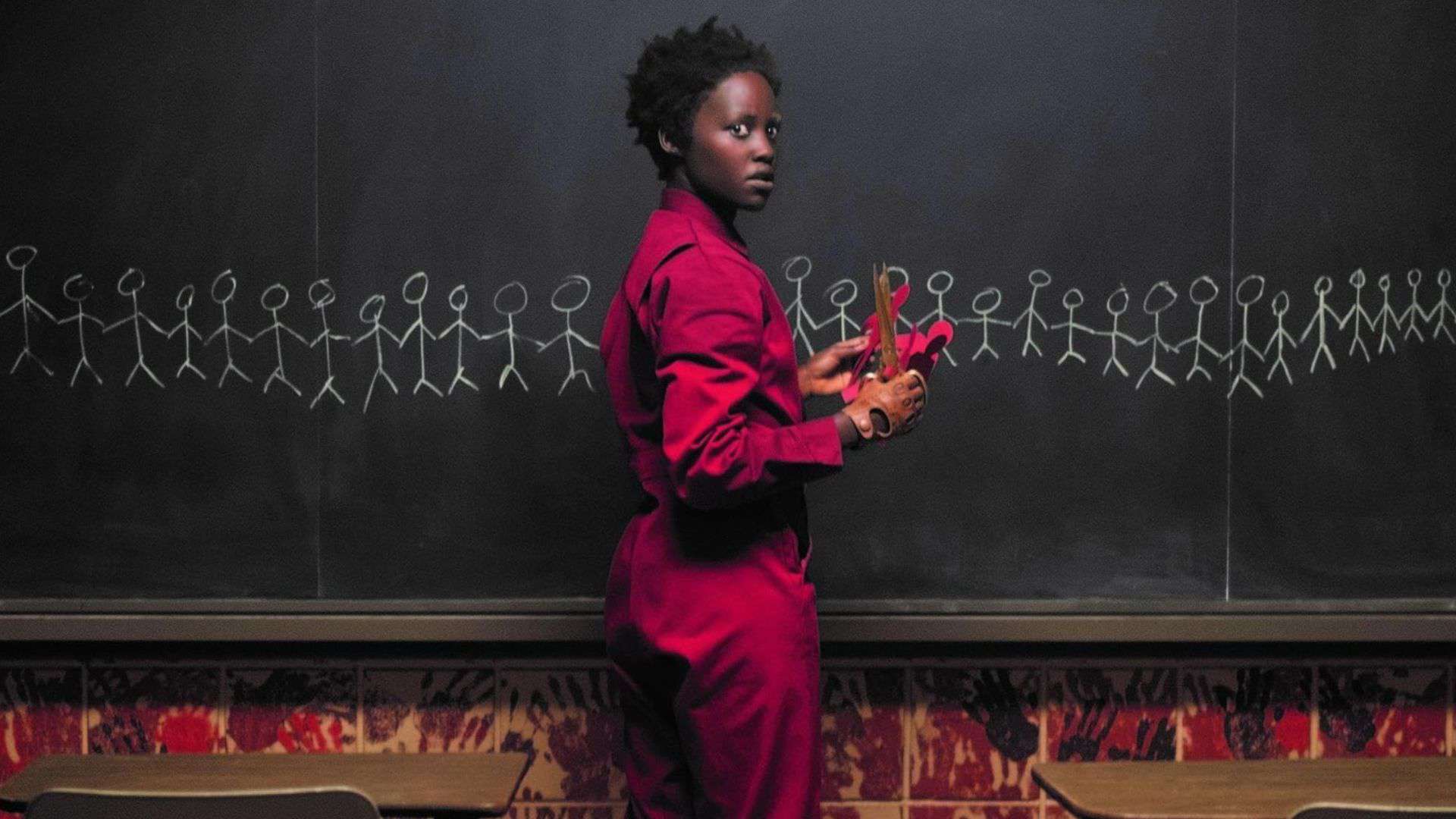
As the scene in “Arrested Development” plays out, we hear a news story about a woman who drives her car into a lake saying she could “take it no more,” to which matriarch Lucille Bluth (Jessica Walter) says after, “Good for her.”

Since then, the meme has been used to applaud what may or may not be an unpopular opinion or a morally gray situation. About a decade later, @cinematogrxphy posted a what-would-be-viral tweet of what they deemed to be the “Good for Her” cinematic universe.If you had the right feed for it, this idea had your social media in a chokehold as it dawned the discussion of what qualifies as a “Good for Her” movie. In the original post, @cinematogrxphy creates a collage of eight characters:
- Thomasin (Anya Taylor-Joy) from “The Witch” (2015)
- Dani (Florence Pugh) from “Midsommar” (2019)
- Adelaide/Red (Lupita Nyong’o) from “Us” (2019)
- Cecilia (Elisabeth Moss) from “The Invisible Man” (2020)
- Marta (Ana de Armas) from “Knives Out” (2019)
- Amy (Rosamund Pike) from “Gone Girl” (2014)
- Grace (Samara Weaving) from “Ready or Not” (2019)
- Susie (Dakota Johnson) from “Suspiria” (2018)
Many people followed suit and created their own collages and lists of what they deemed as qualifiers for this sub-genre, which didn’t so much solidify the criteria as it broadened them.
Now that we’ve taken a look at the history of the sub-genre, let’s dive into what makes a “Good for Her” movie, red flags that have been raised in its discussion, and a list of additional movies to watch if you want to explore this cinematic universe further.
Content Warning: Spoilers for the movies “Midsommar” and “Gone Girl”
Aspects of the ‘Good for Her’ Concept

The rules of qualifying as a “Good for Her” film are pretty flexible and not strictly defined, but essentially it will feature:
- A female character who overcomes a difficult situation ranging from specific instances like abuse and belittlement to overarching societal themes like sexism and forced dependence
- The female character’s arc, which could look like finding agency, defending herself, putting herself first, escaping a bad situation, etc.
- A celebration of women’s rights, and women’s wrongs
Although we can consider this a feminist sub-genre, not all of the films that fall under this little umbrella pass the Bechdel Test. (The simplified criteria are that, in the film, two or more named women are featured, these women talk with each other, and they discuss something other than a man.)
In other words, just because a movie has a “Good for Her” moment or ending, that doesn’t inherently make it a feminist film.
A recent film that beautifully illustrates the “Good for Her” concept is “Poor Things,” a whimsical and fantastical portrayal of a curious woman, Bella (Emma Stone), who is eager to learn about and experience the world around her. As we watch her grow into her burgeoning identity, she is unafraid to question societal expectations and limitations, resulting in plenty of laughs and “Good for Her” moments throughout the film.
Even though Bella’s situations can be dire and dangerous, she never takes on the role of a damsel in distress, proving that this sub-genre doesn’t solely consist of women in horrible situations. That being said, the concept still has red flags that are worth discussing.
Red Flags

Like any artistic concept, the “Good for Her” cinematic universe has its faults. Its celebration of feminism and female empowerment does not promise ethicality, and there have been plenty of discussions on what’s wrong or what’s missing from this idea.
“Good for Her” movies are often criticized for their storylines of “belittled or abused woman takes her power back,” along with the movies primarily featuring white, cis-women. These are both valid discussions that need to be had, and although I’ll be listing movies that prove “Good for Her” movies can be feel-good and can absolutely be about all women, cinema, in general, is a space where we need more representation on both of these fronts.
That being said, the red flag I want to focus on here is the question of ethics in these movies. While the “Good for Her” sub-genre is one propelled by female autonomy and reclamation, it shouldn’t mask or romanticize the severity of what is happening in certain storylines.
“Midsommar” is a fantastic example of this sub-genre. It’s one of my favorite horror movies because it’s so deeply disturbing and beautifully grotesque. Did I nod my head and raise an imaginary glass to Dani when she chooses to sacrifice her terrible boyfriend? Yes. Do I think that this is a happy ending for her? No, of course not. Her whole family is dead, she’s been tripping on psychotropic drugs for who knows how long, and she’s been “adopted” by a cult. There’s no clear trauma resolution for her character, just some short-term satisfaction powered by rage.
There’s a trope within the sub-genre of female characters finding agency at the cost of their sanity, and that shoe fits for “Midsommar.” Another popular “Good for Her” film that follows this trope in a major way is “Gone Girl.” While my reaction to this movie was more along the lines of “Good for her…I guess?” after cringing for almost two hours, it captivated a lot of audiences with its “hell hath no fury like a woman scorned” storyline. Yes, of course, Amy could have reacted much more rationally (and healthily) to her husband being a total heap of garbage, but then there wouldn’t have been a movie.
Dani and Amy’s actions, as extreme as they are, raise an excellent point in this discussion: Women don’t owe you sh*t. The validity of their agency doesn’t and shouldn’t rest on whether or not these characters are morally right or even the remote semblance of a good person — they’re simply acting on what serves them.
With all this being said, there are plenty of movies within the “Good for Her” cinematic universe that don’t resort to the destructive power of realized female rage to tell the story, but I’m not going to judge you for having a cathartic preference — the heart wants what it wants.
‘Good for Her’ Movies to Add to Your Watch List

This is by no means an exhaustive list of “Good for Her” movies — there are so many out there across genres — but here are a few (aside from those previously mentioned) to get you started:
- “Arrival” (2016) | Stream on Paramount Plus
- “Carrie” (1976) | Stream on Max
- “The Danish Girl” (2015) | Rent or Buy on Apple TV
- “Don’t Worry Darling” (2022) | Stream on Hulu
- “Ex Machina” (2014) | Stream on Hulu
- “Everything Everywhere All at Once” (2022) | Stream on Amazon Prime Video
- “Frances Ha” (2012) | Stream on Netflix
- “Girl, Interrupted” (1999) | Stream on Hulu
- “Hard Candy” (2005) | Stream on Amazon Prime Video
- “Jackie Brown” (1997) | Stream on Amazon Prime Video
- “Kiki’s Delivery Service” (1989) | Stream on Max
- “Matilda” (1996) | Stream on Netflix
- “Mother” (2009) | Stream on Amazon Prime Video
- “Nightingale” (2018) | Stream on Hulu
- “Pearl” (2022) | Stream on Hulu
- “Prey” (2022) | Stream on Hulu
- “Revenge” (2017) | Stream on Amazon Prime Video
- “Thoroughbreds” (2017) | Stream on Hulu
- “The Witches of Eastwick” (1987) | Rent or Buy on Amazon Prime Video
- “You’re Next” (2013) | Stream on Hulu
